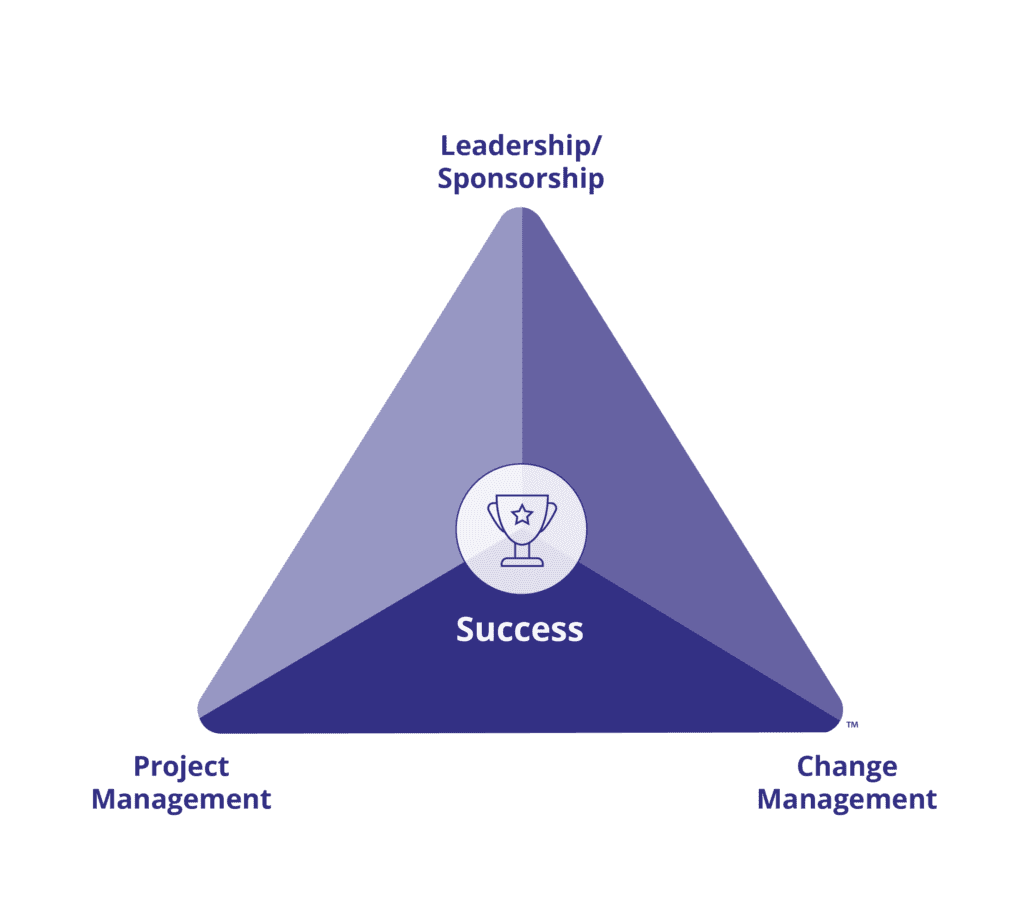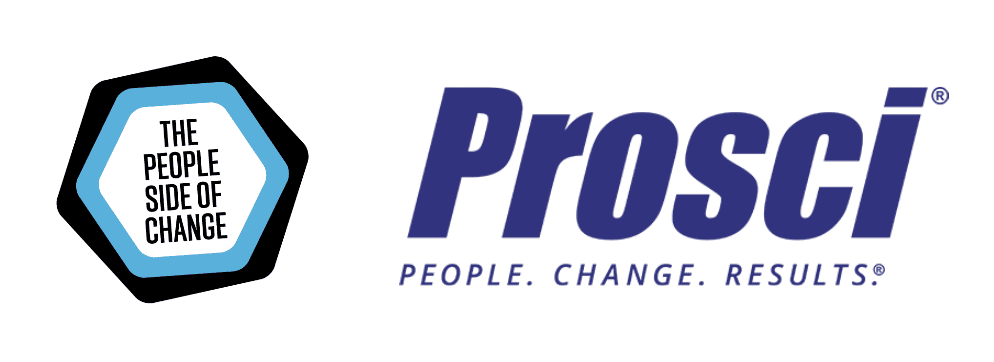PROSCI MEthodology
Change Management
Driving change success by preparing, equipping and supporting individuals to thrive through change.
FOUNDATION
What is Change Management?
For changes to be successful, we must prepare, equip and support individuals moving through changes so that they successfully adopt the changes. Without adoption, changes will not be successful and we will not deliver the desired outcomes. Change management is the enabling framework for managing the people side of change.
Prosci research reveals that if a project is weak in any of the four aspects, it will struggle or fail. The PCT Model in the Prosci Methodology diagram emphasizes that any change management strategy begins with success in mind. Still, practitioners typically leverage the PCT Model in all three phases of the Prosci 3-Phase Process.

THE MODEL
More than just communications and training
Managing change is often simply comprised of a communications plan, where executive leaders or project managers communicate to the organization that there’s change coming (typically on short notice) and sending people to training. But change management is much more than communicating what is changing and training on knowledge and skills.
We must support people in the organization through their transitions from the current state to the future state, and understand what is needed to influence each person to embrace and adopt the change. In this way, organizations can significantly increase the chances of project success and their project investments paying off.
METHODOLOGY
The need for a structured, flexible methodology
Organizations adopt the discipline of change management in different ways depending on their business needs. For instance, they have a must-win technology implementation that can benefit from change management, or they decide to invest in change management as an organizational capability to support aggressive business growth. In other words, change management can vary in scope and purpose, and one organization might define and implement it differently than another.
So it’s especially important that companies leverage a structured yet flexible approach to managing change in their organizations.

Change management at the project level
The application of a structured process and set of tools for leading the people side of change to achieve a desired outcome on our project.
Change management at the organizational level
A leadership competency for enabling change within our organization and a strategic capability designed to increase our change capacity and responsiveness to change.
ORGANISATION LEVEL
Building change capability
You can increase your organization’s capacity for change and better prepare for future change by building your overall change capability. We refer to this capability as enterprise change management (ECM).
Basically, enterprise change management is the systematic deployment of change management skills, tools and processes throughout an organization. You can gain these capabilities through avenues such as formally training key roles on their change competency in your organization and embedding the change management discipline into the structure and projects of your organization.
RESEARCH
Why Change Management?
How you manage change impacts the things that matter most to your organization, including your employees, your customers and your profitability. Given that organizations are facing faster and more complex changes than ever before, the reasons for change management are only growing. But more than anything, change management prepares, equips and supports employees, so they can engage, adopt and use the change successfully.
Improving project outcomes
Project management, which focuses on the technical side of change, and change management, which focuses on the people side of change, both play critical roles in change success. When using a best-practices approach to managing change such implementing a new accounting platform to streamline processes, how much can you improve the likelihood of meeting your project objectives? By a whopping 6X, according to Prosci’s research, where we’ve been surveying practitioners around the globe for more than 20 years.
With excellent change management, employees:
- Adopt changes faster, more completely and more proficiently
- Stay engaged in the organization during disruptive change
- Understand why the change is happening
- Have the time and tools to get on board and feel heard and supported
WIDELY USED APPROACH
Change Management Methodology
The Prosci Methodology is one of the most widely used approaches to change management in the world. To date, Prosci has certified more than 100,000 practitioners worldwide.
The Prosci Methodology and its associated models, tools and processes are based on 20+ years of research, making it a true best practices approach to change management. The main components of the Prosci Methodology are: the Prosci ADKAR Model, the PCT Model and the Prosci 3-Phase Process.
The Prosci Methodology is based on this fundamental principle:
The secret to successful change lies beyond the visible and busy activities that surround change. Successful change, at its core, is rooted in something much simpler: how to facilitate change with one person.
Succeed with Six Free ADKAR Resources
Your success is our top objective! By now you’ve been exposed to the Prosci ADKAR Model it’s time to learn more about the building blocks which make up this powerful tool.

